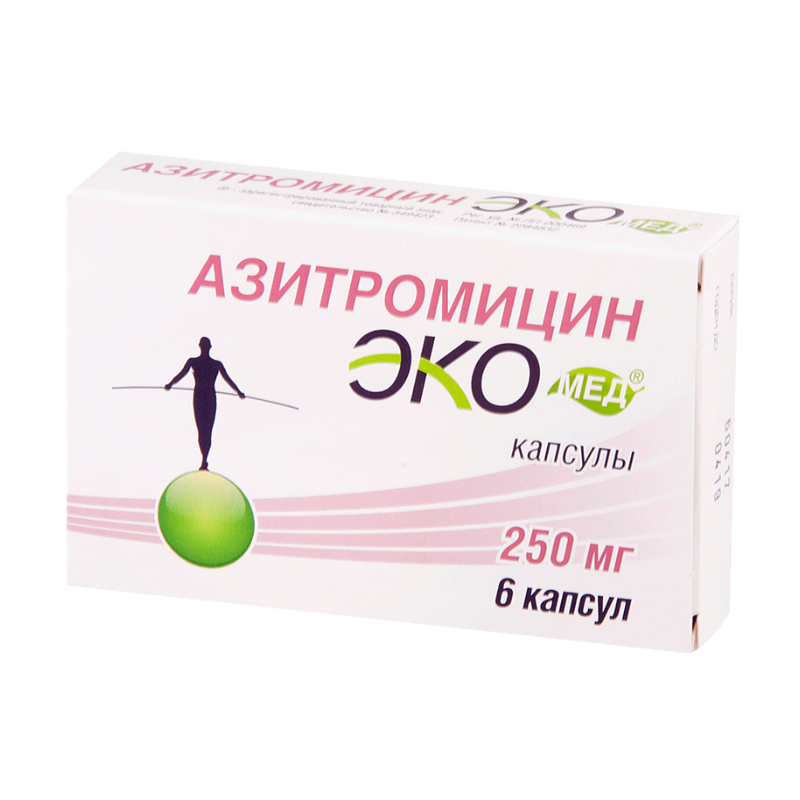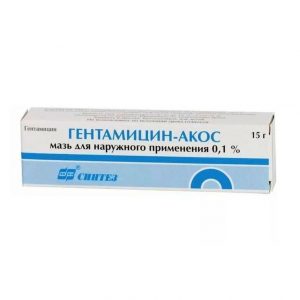Description
Release form
Tablets, film-coated yellow, capsule-shaped, biconvex. Two layers are visible in the cross section. The inner layer is white or almost white.
Indications
Infectious and inflammatory diseases caused by microorganisms sensitive to azithromycin:
infections of the upper respiratory tract and ENT organs: pharyngitis, tonsillitis, sinusitis, otitis media
infections of the lower respiratory tract: acute bronchitis, bronchitis, exacerbation, exacerbation .h. caused by atypical pathogens of
infection of the skin and soft tissues: ordinary acne of moderate severity, erysipelas, impetigo, secondarily infected dermatoses
the initial stage of Lyme disease (borreliosis) – erythema migrans erythema migrans
urinary tract infections caused by Chlamydia trachomatis (urethritis, cervicitis).
Contraindications
hypersensitivity to antibiotics of the
macrolide group severe hepatic and / or renal failure
children under 12 years old with a body weight of less than 45 kg (for this dosage form)
breastfeeding srdlkrd sp liver function and caution: with arrhythmias or a predisposition to arrhythmias and lengthening of the QT
interval with the combined use of terfenadine, warfarin, digoxin
, simultaneous administration with ergotamine and dihydroergotamine.
Special instructions
If you miss an antibiotic, you should take the missed dose as soon as possible, take the next doses at an interval of 24 hours.
After discontinuing therapy with azithromycin, the hypersensitivity reactions in some patients may persist for a long time and may require specific therapy under doctor’s supervision.
Given the likelihood of side effects from the central nervous system, caution should be exercised when driving vehicles and working with machinery.
Composition
One tablet contains:
Active ingredient: azithromycin dihydrate in terms of azithromycin 250 mg
Excipients: lactulose 300 mg, calcium phosphate dihydrate 59.8 mg, corn starch 24.0 mg, hypromellose 5 lauryl sulfate 1.2 mg, croscarmellose sodium 20.0 mg, magnesium stearate 6.0 mg, microcrystalline cellulose to obtain a tablet without a shell weighing 700 mg
Excipients: hypromellose 9.49 mg, titanium dioxide 5.2 mg, macrogol- 4000 4.16 mg, talc 1.12 mg, dye tropeolin-O 0.03 mg, to obtain a tablet with a shell weighing 720 mg.
Dosage and administration
EkomedВ® is taken orally, without chewing, 1 time per day, regardless of food intake.
Adults (including older people) and children over 12 years old with body weight over 45 kg.
For infections of the upper and lower respiratory tract, ENT organs, skin and soft tissues: 0.5 g per day for 3 days (course dose – 1.5 g).
For acne vulgaris of moderate severity: 0.5 g per day for 3 days, then 0.5 g once a week for 9 weeks.
The first weekly pill should be taken 7 days after taking the first daily pill (8th day from the start of treatment), the next 8 weekly tablets – with an interval of 7 days. Heading dose 6.0 g.
For erythema migrans: 1 time per day for 5 days, 1st day 1.0 g. Then from 2nd to 5th day, 0, 5 g. Course dose 3.0 g.
For infections of the genitourinary tract caused by Chlamydia trachomatis (urethritis, cervicitis): 1.0 g once.
Prescribing to patients with impaired renal function.
For patients with moderate impaired renal function (creatinine clearance> 40 ml / min), dose adjustment is not necessary.
Side effects of the
Digestive system: nausea, vomiting, diarrhea, abdominal pain, loose stools, flatulence, indigestion, anorexia, constipation, discoloration of the tongue, pseudomembranous colitis, cholestatic jaundice, hepatitis, changes in laboratory parameters liver failure, liver necrosis (possibly fatal).
Allergic reactions: itching, skin rashes, angioedema, urticaria, photosensitization, anaphylactic reaction (in rare cases, fatal), erythema multiforme, Stevens-Johnson syndrome, toxic epidermal necrolysis.
From the cardiovascular system: Consciousness of the heartbeat, arrhythmia, ventricular tachycardia, increased QT interval, bidirectional ventricular tachycardia.
From the nervous system: dizziness / vertigo, headache, cramps, drowsiness, paresthesia, asthenia, insomnia, hyperactivity, aggressiveness, anxiety, nervousness.
From the sensory organs: tinnitus, reversible hearing loss up to deafness (when taking high doses for a long time), impaired perception of taste and smell.
From the circulatory and lymphatic systems: thrombocytopenia, neutropenia, eosinophilia.
From the musculoskeletal system: arthralgia.
From the genitourinary system: interstitial nephritis, acute renal failure.
Other: vaginitis, candidiasis.
Drug Interactions
Antacids do not affect the bioavailability of azithromycin, but reduce the maximum concentration in the blood by 30%, so the drug should be taken at least one hour before or two hours after taking these drugs and food.
With parenteral administration, azithromycin does not affect the concentration of cimetidine, efavirenz, fluconazole, indinavir, midazolam, triazolam, co-trimoxazole in plasma when used together, however, the possibility of such interactions with the appointment of azithromycin for oral administration should not be ruled out.
If it is necessary to use it together with cyclosporine, it is recommended to control the content of cyclosporin in the blood.
With the combined use of digoxin and azithromycin, it is necessary to control the concentration of digoxin in the blood, because many macrolides increase the absorption of digoxin in the intestine, thereby increasing its concentration in blood plasma.
If co-administration with warfarin is necessary, careful monitoring of prothrombin time is recommended.
Concomitant use of terfenadine and macrolide antibiotics causes arrhythmia and lengthening of the QT interval. Based on this, the above complications cannot be excluded with the combined use of terfenadine and azithromycin.
Since it is possible to inhibit the CYP3A4 isoenzyme with azithromycin in parenteral form when used together with cyclosporine, terfenadine, ergot alkaloids, cisapride, pimozide, quinidine, astemizole and other drugs whose metabolism involves this isoenzyme, the possibility of such an interaction should be taken into account when prescribing azithromycin for oral administration.
When co-administered with azithromycin and zidovudine, azithromycin does not affect the pharmacokinetic parameters of zidovudine in blood plasma or the excretion by the kidneys of it and its glucuronated metabolite. Nevertheless, the concentration of the active metabolite, phosphorylated zidovudine, in the mononuclear cells of peripheral vessels increases. The clinical significance of this fact is not clear.
With the simultaneous administration of macrolides with ergotamine and dihydroergotamine, their toxic effects may occur.
Overdose
Symptoms: temporary hearing loss, nausea, vomiting, diarrhea.
Treatment: symptomatic.
Terms of dispatch from
pharmacies Prescription
lekarstvennaja form
tablets
Prescribing
Pregnant as prescribed by the doctor, For adults as prescribed by the doctor, Children as prescribed by the doctor, Children over 12 years old
Indications
Angina, Infectious diseases, Bronchitis, Bronchitis, Bronchitis, respiratory tract, urethritis, pharyngitis, sinusitis, pneumonia, otitis


